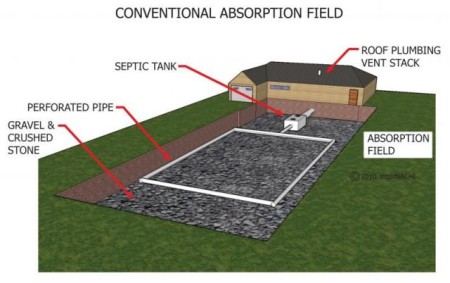SEPTIC INSPECTIONS
Many commercial buildings have a septic system. The State of NH now requires all septic inspections to be completed by a licensed evaluator who follows the NH standards of practice. We not only hold a valid license but also assists in teaching the Granite State Designers and Installers course on septic evaluation.
Commercial buildings have special needs when it comes to waste management, and not knowing those needs, or not knowing if your system is adequate/functioning properly, can cost tens of thousands of dollars in repair. That is why when we inspect a septic system we hold to the highest national standards.
Our septic system report is comprehensive and easy to read. I include digital photographs for a better understanding of the system, components, and condition. To help our clients understand how we inspect their septic system better, we have laid out our inspection method below. Please feel free to contact me about your septic inspection, with or without a home inspection.
Evaluate the plumbing components inside the building:
We inspect all of the interior plumbing fixtures for proper connections. I also make sure all the waste lines are properly discharging into an approved waste system. Water treatment systems can be harmful to septic systems, so we evaluate where the discharge of these systems goes.
Examine the inside of the treatment tank:
Most commercial buildings have an initial treatment tank. We open the tank and examine the inlet and outlet baffles and determine the volume of the treatment tank. We inspect the visible parts of the tank for cracks, water infiltration, corrosion, and leakage. We also take a sample from inside the tank with a sludge sampler. By examining the sample we can determine the amount of sludge, liquid level, and scum layer. This allows me to understand whether the tank is healthy and if it needs pumping.
The Distribution Box (D-Box):
The D-Box is an important component in your septic system that keeps thins evenly distributed. We inspect the distribution box for corrosion, leakage, and cracks. We also make sure the D-Box is level to ensure equal flow to each pipe in the leaching field.
EDA, ( Effluent Disposal Area ) or leach field:
The leach field is not the hardest working component of a septic system, but it is one of the most vital. We will determine the location and size of the EDA. Test holes are hand dug in different locations throughout the EDA. This allows me to examine the condition of the EDA as well as how much saturation is present. A full evaluation of the EDA is critical in determining the overall condition of the septic system.
